Guide to Buses in Quito Ecuador
categories: south america travelQuito Ecuador is one of the best places to visit in South America, but when I first came to live in Quito, understanding the public transportation system was a little overwhelming. The local Ecuadorians, even my Ecuadorian girlfriend, tried to explain the system various times. However, it didn’t quite stick until I sat down and did the research on my own. Since then, traveling around Quito by bus is fairly easy. You just have to have a visual understanding of the City layout and learn some of the main bus routes and stations. Here is a compilation of easy-to-understand information and tips so you can travel around the city with safety and ease. You don’t need a car for the time you are in Quito although you may for weekends and day trips from Quito.
Table of contents: ()
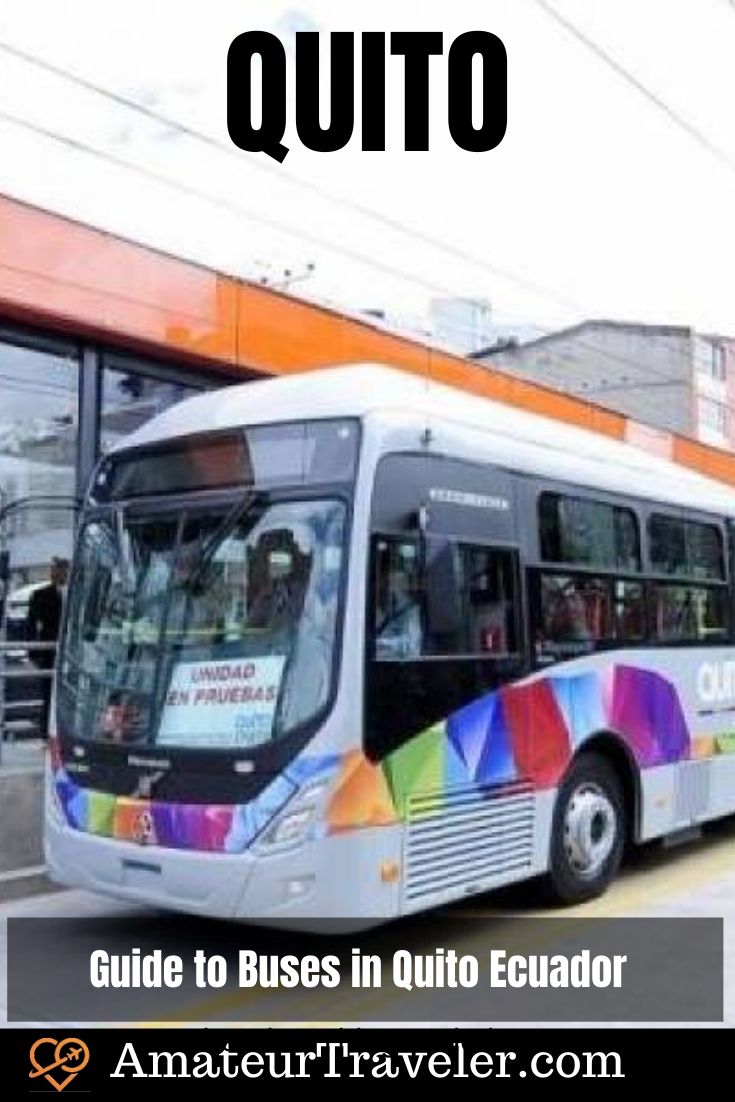
- Step 1: Understand Safety of Quito Public Transportation
- Safety Tips for Quito Public Transportation
- Step 2. Use Offline Maps
- Important Quito Bus Terminals Stations
- Step 3: A Vertical City – Quito Bus Guide
- North-South Bus Routes
- Trole Bus
- Metrobus
- Taxis and Uber in Quito
- Uber service in Quito
- Taxi Safety in Quito
- Tipping – Quito Bus Guide
- Podcast – Travel to Ecuador
Step 1. Understand Safety of Quito Public Transportation
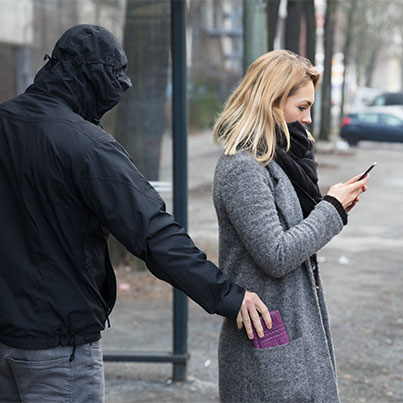
Keep a close watch on your valuables!
Understanding safety is the first priority, as Quito can be a dangerous city if you are at the wrong place at the wrong time, or in certain places at any time. If you are choosing to use buses, you likely want to save a little bit of money or embrace the local experience. I admit it is exhilarating and satisfying to navigate the country as a local, commanding your way around a city on the Buses of Quito.
However, heed this warning: thievery is a danger in Quito and Ecuador overall. A 3-5 dollar taxi is less expensive than losing your smartphone, nice camera, or anything else of value on public transportation. I have lived in the city for a year, and I haven’t had an item stolen or been mugged by following a few simple rules. The two most important of them: never carry around more than 40 dollars in your wallet, and never carry your passport. Keep a Photocopy of the passport, as getting a new passport abroad can be a total nightmare. Keep your bills smalls, think 5s and 10s. And plenty of quarters for buses.
Safety Tips for Quito Public Transportation
- Travel on buses during the day. At night, thievery is more common, especially if you have been drinking in the city and your focus isn’t tip-top.
- Thieves don’t have a “look”, they can be children, innocent-looking woman, or a regular looking guy.
- Don’t walk far from the bus stops or attractions if you are outside of the Mariscal or historic center. Take an uber or taxi once exiting the bus.
- When sitting or riding on buses, don’t put your bag on the floor or on a rack above. The back will be slashed with a knife from behind, and your items were taken without you even noticing. Don’t place anything on the top racks of buses leaving Quito, it will likely be stolen. Keep the bags on your lap.
- If you are a foreigner, you are already a target. Don’t carry around a Nikon DSLR or any valuables in wide-open visibility.
- Keep your important electronics in an inner pocket of a jacket. If it is too hot for a jacket, put all the items in one pocket, and keep your hand in that pocket on top of the items the whole time while the other hand supports for stability.
- If you have a backpack, wear the bag in front and be sure to keep vigilant even when it is in front. The thieves on Quito buses generally aren’t the confrontational type. They try to steal without you noticing.
Step 2. Use Offline Maps
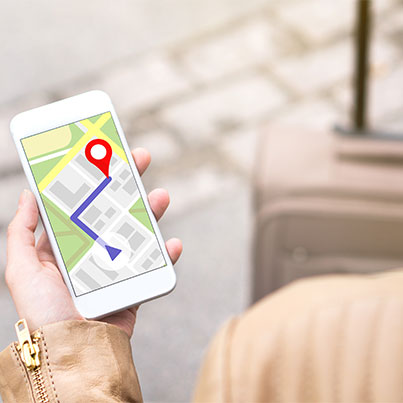
However, I advise all tourists not to pull out their phones while walking around the city. This could end in a snatch and grab, especially if you have an expensive phone. Rather, step into a store or restaurant and take a quick check of the map. Count how many streets away and which street to turn. Remember, most locals are happy to help, just write your destination if you aren’t confident in your Spanish accent.
Detailed instructions on downloading offline maps
Important Quito Bus Terminals / Stations
Rio Coca
An important terminal for transferring to the bus stop in the valley of Quito called Cumbaya. This also leads to the thermal springs of Papallacta. Details on how to arrive in ecovia section
Quitumbe
Reach the common tourist destinations of (Guayaquil), the Amazon, and most of the mountain regions (including Banos and Cuenca). More details on how to get here in the “Ecovia” and Trole Sections.
Quitumbe Terminal: https://goo.gl/maps/hNSx8oTHnBYkEctz8
Ofelia
Go to the Zoo, nature-rich Mindo, or the Middle of the World (Mitad de Mundo) where you’ll find a museum that sits on the equator. More details on how to get here in the Metrobus section.
Ofelia Terminal: https://goo.gl/maps/ikzRKXJ3qMGNFQPv9
Terminal Terrestre Carcelén
Terminal Terrestre Carcelén is Located in the north, where you can visit Otavalo, Ibarra, Mindo, Santo Domingo, and Tulcán. See Trole section for details.
Step 3: A Vertical City – Quito Bus Guide
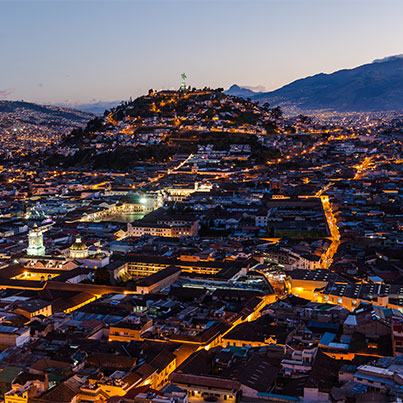
Quito’s colonial sector at night
The third step in learning the Quito bus system is first visualizing the layout of the city. This city a vertical city, with the majority of buses running North to South. The main Quito attractions fall within a 25-mile vertical limit, with Mitad de Mundo (Middle of the earth) at the northern limit, and the Panecillo at the Southern Limit.
The city does extend beyond this area, but most of the things to do in Quito for tourists fall within these limits. You can spend months exploring the city just within these boundaries. As for horizontal orientation, most of the attractions of Quito are a mile and a half distance from east to west. Once you are perpendicular to your destination of interest, you simply need to take a quick uber, taxi, or walk!
North-South Bus Routes
Ecovia
This bus runs down the avenue “Seis de Diciembre,” or “Sixth of December.” This road is the Easternmost North-South Route. The Northernmost station is called Rio Coca, an important terminal for transferring to a bus stop in the valley of Quito called Cumbaya. The Ecovia stops are in a structure placed in the middle of the street, and buses going north or south stop at the same structure, unlike Trole and metrobus. The cost is 25 cents (2019)
For all stops: Click Ecovia tab https://www.trolebus.gob.ec/
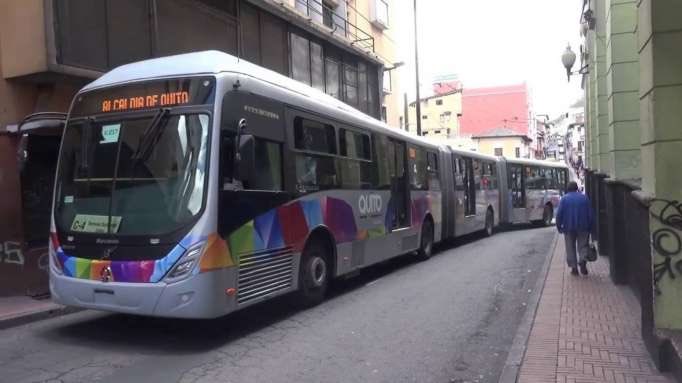
Courtesy of Municipality of Quito
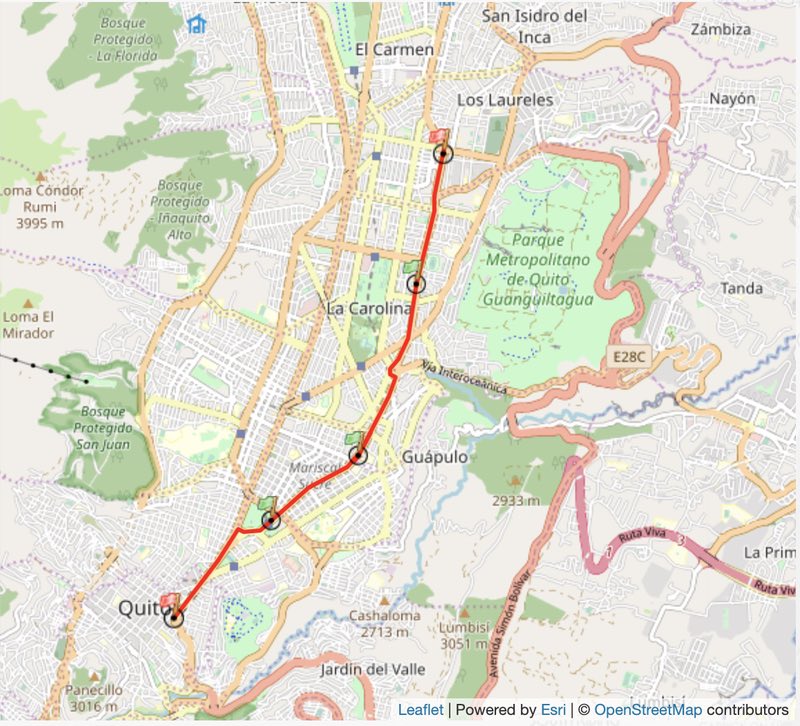
Ecovia: The Easternmost bus route
Papallacta
At the bus stop in Cumbaya linked below, you can take a green bus that leads to the thermal springs of Pappalacta. Once you arrive, there are trucks and taxis for hire that will take you to the top for a small fee of less around 3 dollars(2019), or walk 45 minutes to an hour to the top.
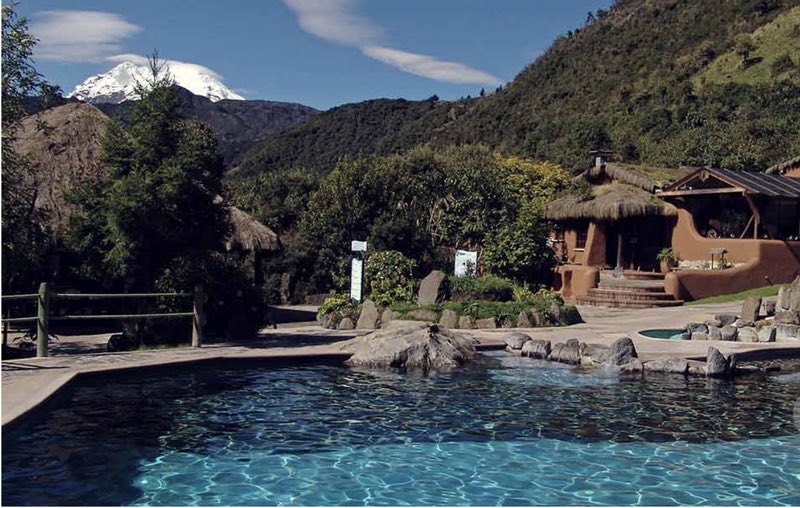
Caption Thermal springs of Papallacta with Antisana volcano in the backX
- Terminal Rio Coca https://goo.gl/maps/xyjTLqqxSfVrtm4X8
- Cumbaya bus stop to Papallacta https://goo.gl/maps/8e9tKAWJyARdtLWY9
- Pappalacta: https://goo.gl/maps/K8znrg3Vmqrse38DA
Quitumbe
If you want to get to the Southern stations, look out for signs on the front of the bus that will say “E2 Rio Coca – Quitumbe”
Timing of Ecovia Buses
- Monday through Friday 05h30 a 22h00 with 2-minute intervals
- Saturday : 05h55 a 21h30 4 minute intervals
- Sunday: 05h55 a 21h00 6 minute intervals
Trole Bus
The Trole bus is a route in the middle of the three vertical routes, running west of the large Carolina park of Quito. There are plenty of stops, and you can search “Trole Paradas” on google maps and you will see all the stops. There will be two structures for every stop, one for buses running south and the other for buses running North. Hop on the C2 to get through the mid ranges of the city that are highlighted on the map below, C5 further North to Carcelen station, and C4 & C6 for going to the south (Quitumbe Terminal) The Cost is 25 cents.
For all stops: https://www.trolebus.gob.ec/
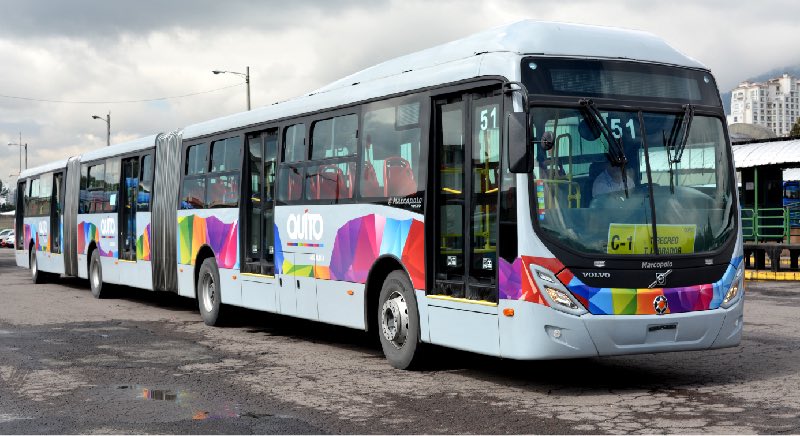
Courtesy of Trolebus.gov.ec. Notice the C-1 on the front of the bus.

Trole: The center route.
Papallacta
The Rio coca station can also be reached by Trole bus, where you can head to Cumbaya papallacta.
Cumbaya bus stop to Papallacta https://goo.gl/maps/8e9tKAWJyARdtLWY9
Quitumbe
Take c1, c2, or c4 to the Recreo terminal and then look out for signs on the front of the bus that says “C6” for Quitumbe.
Metrobus
The Westernmost of the three routes, ranging from the Ofelia Station in the far North to the Mariscal area of the South. The cost is 25 cents. The Ofelia station is important as it leads to buses to Mitad Del Mundo, which is a 40 cent ride. There will be officials in the terminal to point to the next bus. Simply say Mitad del Mundo and they will point you in the right direction.
You can also get to the Zoo of Quito in 30 minutes by taking a bus with Guayllabamba on the front. There will be a fleet of trucks ready to take you Tuesday through Saturday 9 am – 4 pm for $1.50
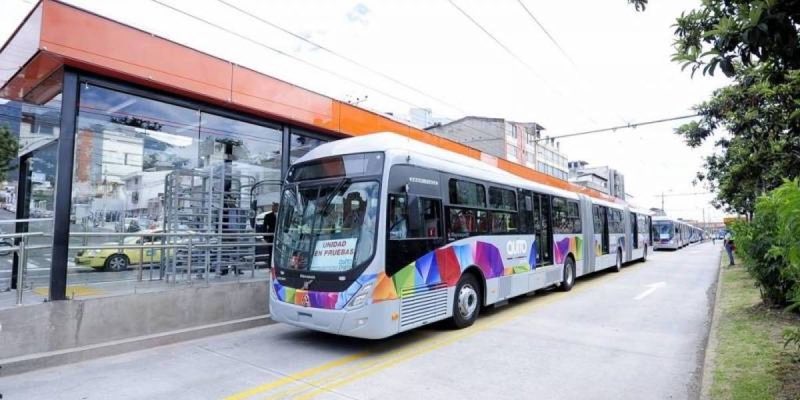
A Never-Ending Bus. Courtesy of Metro Ecuador.
Zoo bus Stop: https://goo.gl/maps/8eBck6Le9vCc3bfT8
Ofelia terminal: https://goo.gl/maps/ikzRKXJ3qMGNFQPv9

Metro Bus: The Easternmost Route
Taxis and Uber in Quito
Once you are perpendicular to your destination from your Quito Bus, it is time to take a taxi or uber. But before you decide which to take, read about the options so you understand the whole picture.
Uber service in Quito
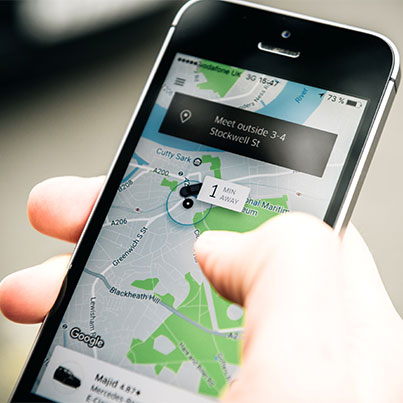
A little unknown fact, however, is that uber in Ecuador is not a registered company in Ecuador, and drivers face high fines if they are caught providing the Uber service. The drivers will kindly ask a guest to sit in front, in order to avoid any suspicion. I have ridden in hundreds of Ubers in the city, and have never had an issue. Know that you will not face any issues if the driver was by chance caught.
Why is Uber not registered in the Country? The organization of public transportation, including buses and taxis, are vehemently against uber, as they are a big competitor. This organization has a lot of power and influence in the government, and they have spoken their piece about the organization.
Taxi Safety in Quito

It is important to follow some safety tips in order to make sure you get to your destination safely. There are a lot of cabs, but not all of them are legitimate. If you don’t use the following advice, you may find yourself in a taxi that will up-charge the rate significantly, or worse an unsafe driver with bad intentions.
- The first step is identifying a properly licensed taxi. Legal taxis will have their taxi registration number in 5-inch numbers on the windshield or on the door or a 4 digit sticker on the window. Check for a license plate in the front and back, and a company name on the side of the car.
- Insist taxi drivers use the taxi meter, while is required by law during the day. (“por favor, usa el taximetro” in spanish). If they resist, find another.
- If you are on the streets, look for If you are in a restaurant, bar, or hotel, the staff will be happy to help hail a cab for you.
- If you are alone at night, call a friend or pretend to be on the phone while in the taxi. Always a good safety tip in taxis
- Write down the registration number and get a good look at the driver. Another great preventative measure.
- Keep a hawk’s eye on the taxi meter. Make sure it isn’t magically jumping up a 50 cents in a few seconds.
Tipping – Quito Bus Guide
Tipping isn’t common by locals for taxis, but very much appreciated. If a driver assists with bags, a tip of a dollar would put a smile on their face!
Podcast
Hear Keenan talk more about Ecuador on Travel to Ecuador – Amateur Traveler podcast episode 695:


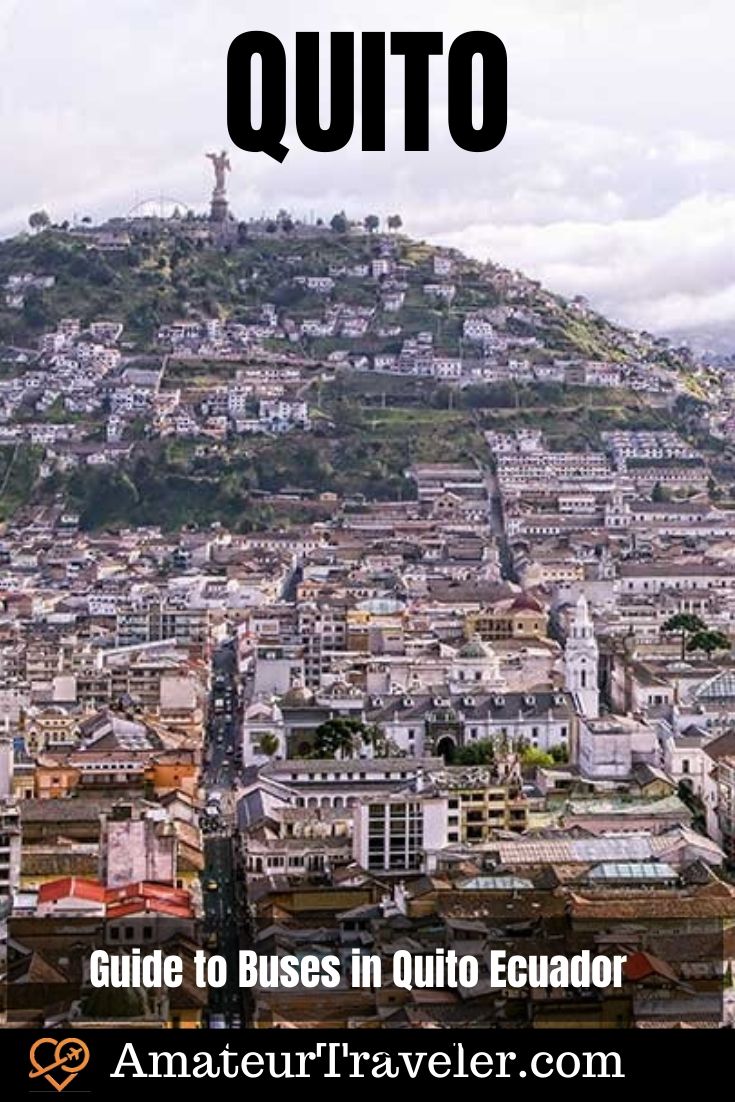
 Sunday Strolls through Quito, Ecuador
Sunday Strolls through Quito, Ecuador Travel to Ecuador – Episode 695
Travel to Ecuador – Episode 695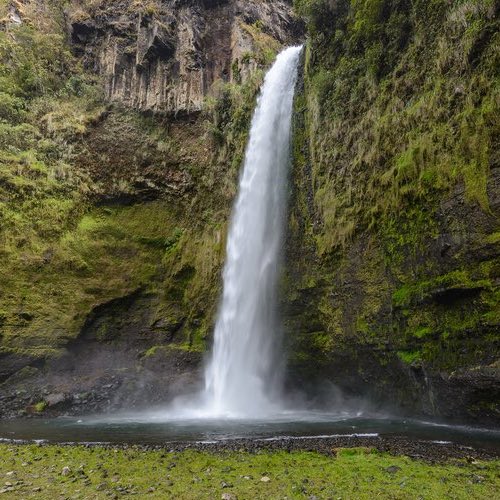 Ecuador Waterfalls – The Stunning Waters of Ecuador
Ecuador Waterfalls – The Stunning Waters of Ecuador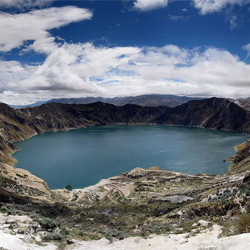 Trekking in Ecuador’s Quilotoa Loop – Episode 392
Trekking in Ecuador’s Quilotoa Loop – Episode 392

Dani
Says:January 14th, 2020 at 1:00 am
Hi, Keenan,
thank you so much for your post on Quito, Ecuador bus system. I am just back from there and even after reading your post (I am subscriber to your blog for well over a year) I was about to give up. But then I just put everything together on a piece of paper and clicked somehow. What a relief, saved some money not using Uber and enjoyed being closer to regular people, which I enjoy every time I travel.
By the way, I used public wifi in cafes, restaurants a lot (especially before buses made sense) and always used VPN. I am IT person myself and actually run VPN app business and it seems you haven’t yet given this tip to your readers. Please, do – always use VPN on wifi, I deal everyday with clients who were harmed by being hacked when traveling abroad this way. Mostly, credit card information being taken away, sometimes ransomware attacks on people’s accounts. Recommend free VPN, that’s fine for occasional use, mine is Atlas VPN (https://atlasvpn.com).
Again, thanks and good luck in your travels and writing 🙂
Best,
Dani
Chris Christensen
Says:January 14th, 2020 at 8:32 am
Great tip for VPN Dani!